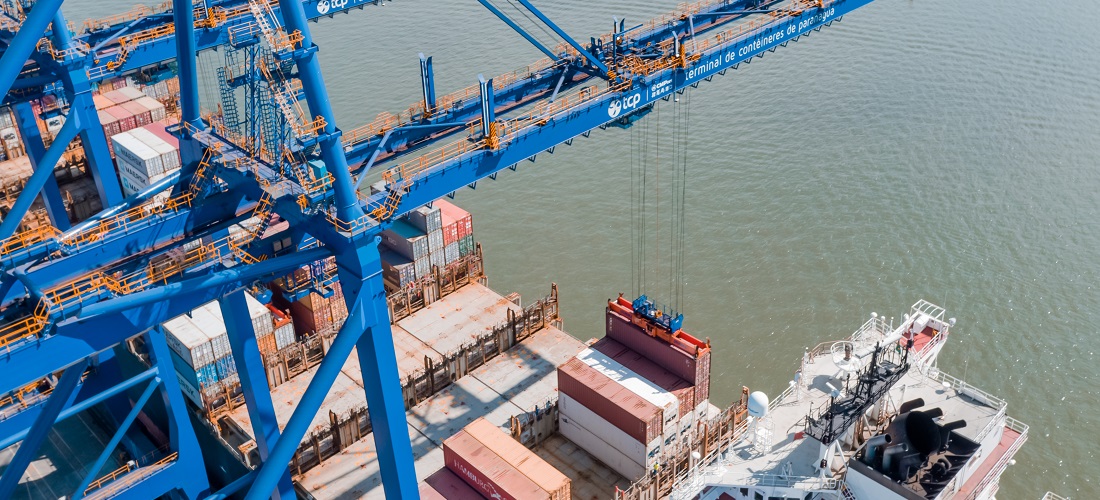TCP, the company that manages the Paranaguá Container Terminal, has just acquired a training simulator to train new operators of RTGs (rubber-tired gantry cranes) and STSs (cranes that load and unload containers onto ships). Imported from the United States, GlobalSim’s Essential Plus simulator provides an extremely realistic and accurate training environment, significantly improving operator training.
Leandro Laureano, TCP’s operations manager, points out: “This technology will be used to prepare new operators and to improve the skills of our more experienced professionals, as it provides high-quality training in a controlled environment where we can simulate multiple scenarios, such as adverse weather conditions, containers of various sizes and different types of ships.”
The Terminal’s technology team was responsible for studying the benefits of the solution, choosing the model and monitoring the simulator’s construction, assembly and delivery processes. “The main advantage of adopting this equipment is safety, as training in a controlled environment means that any incident does not pose a risk to students and instructors, the terminal’s operations or our clients’ assets,” explains Walter Maria Junior, TCP’s IT manager.
Crucial to the handling of the terminal’s containers, RTG and STS operators deal with cranes weighing more than 1,000 tons and standing 24 and 68 meters high, respectively. According to Junior, “the size of this equipment justifies the investment in the simulator because, in the long term, we are reducing wear and tear on the equipment and the emission of polluting gases due to diesel consumption, since the training doesn’t have to be carried out exclusively on the real equipment. In other words, the sustainability factor was also relevant to this choice.”
Simulator in practice: immersive and safe experience
The simulator consists of two stations, one for the instructor and one for the student. Equipped with four monitors, two mice, two keyboards, two joysticks and a printer, the instructor’s station allows for the creation of varied scenarios, such as operations in fog, strong winds and storms, as well as situations in which the container has problems with the corners, overloading, non-uniform loading, excess height, the use of accessories for the operation and operations on different types of ships.
The student station simulates the operating cabin, providing an immersive experience with four monitors, a handling chair and four consoles. “In this way, the simulator offers a detailed view of the operators’ performance, including loading and unloading routes, handling speed, and other crucial parameters,” explains Laureano. The simulator also generates detailed reports and graphs, as well as having a replay system for subsequent performance analysis, promoting continuous improvement and mitigating operational risks.
The Terminal began analyzing the acquisition of the simulator in September 2021 and, following its arrival in April this year, the operations specialists underwent training to master the software and its configurations. The first class of STS operators, made up of five new employees, began their training with the simulator in June; the training is expected to end in mid-July.
TCP expands RTG crane park and creates new jobs
At the end of last year, TCP received 11 new RTGs imported from China. With a height of 24 meters and a capacity to lift 41 tons, these new cranes are equipped with advanced safety technologies, such as laser stack mapping and an anti-trolley lifting system.
The arrival of the new equipment represented a 38% increase in the number of RTG cranes, from 29 to 40. As a result, 65 new jobs for operators of these machines were created, also stimulating the need to invest in new technologies to train professionals.




